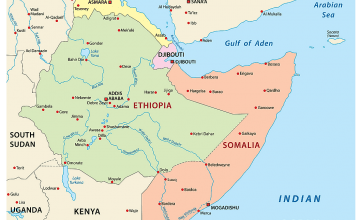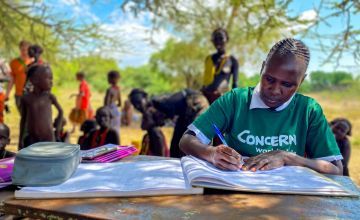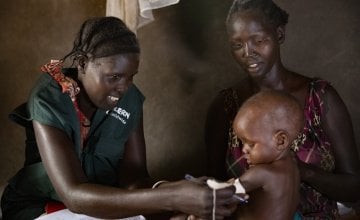
Knowledge Hub
For years, people in the Horn of Africa have struggled to survive conflict and the devastating impacts of climate change. Now, one of the most extreme droughts in recent history has left the Horn of Africa on the verge of a humanitarian catastrophe.
Where is the Horn of Africa?
The Horn of Africa is the easternmost peninsula of the African continent, excluding African islands. The number of countries of which the region comprises varies. Some publications recognise it as being home to four countries, (Djibouti, Eritrea, Ethiopia, and Somalia), however others define the Horn of Africa as comprising eight countries; Djibouti, Eritrea, Ethiopia, Kenya, Somalia, Sudan, South Sudan and Uganda. For the purposes of this piece, we will recognise the Horn of Africa as the latter.

The Horn of Africa also alludes to the shape of this area because it sticks out like that of a rhinoceros horn from the continent.
Humanitarian situation in the Horn of Africa
The Horn of Africa is experiencing one of its most severe droughts in recent history, with more than 16 million people acutely food insecure in Ethiopia, Kenya and Somalia.
Many harvests have failed and millions of livestock are emaciated or dead. Families are taking desperate measures to survive, with thousands fleeing their homes in search of food, water and pasture. In Somalia itself, one million people have left their homes in search of food, water and pasture, while three million livestock have died.
Moreover, the current conflict in Ukraine has exacerbated the situation. The crisis has created a surge in food prices with Sudan, Kenya, Ethiopia, Somalia and South Sudan likely to be the hardest hit from the fallout of the ongoing conflict.
The drought will be catastrophic for affected families already living in extreme poverty. About 5.5 million children are expected to be acutely malnourished in these three countries in 2022, including more than 1.6 million severely acutely malnourished.
Somalia

Current context
A severe drought is looming in Somalia. This risks the number of people needing urgent humanitarian assistance escalating rapidly in the coming weeks. The number of people affected by drought has risen from 4.9 million in March to about 6.1 million in April.
Displacement
Hunger
Kenya

Displacement
Tens of thousands of families are being forced to leave their homes in search of food, water and pasture, heightening pressure on already-limited natural resources.
Hunger
South Sudan
Displacement
South Sudan is the largest source of refugees in Africa, numbering more than 2.3 million. It recently saw the highest flood levels in living memory in some parts of the country, while dealing with drought in others, amid intermittent conflict.
Despite multiple challenges, residents have been extremely generous to those displaced by violence or erratic weather, often sharing the few resources they have. However, they need sustained support to avert devastating consequences.
Hunger
Ethiopia

Displacement
The drought situation in Ethiopia escalated in scale and impact during the first quarter of 2022, resulting in an unprecedented displacement of people and livestock in search of grasslands, and an increase in the number of livestock deaths due to diminishing health conditions, fatigue, lack of water, and long trekking distances.
Hunger
Despite successful resilience-building efforts across the region, communities have been finding it harder to recover between the increasingly frequent and severe droughts - three in the past ten years alone. This, compounded by Covid-19, locusts and conflict has meant that the vulnerable have little space to recover and bounce back.
We are already fighting to prevent the situation from getting worse by treating tens of thousands of people suffering from severe malnutrition, providing emergency water and cash to buy food, repairing boreholes and wells, and vaccinating livestock against disease. But more is needed to prevent the starvation of millions.
Other ways to help
Donate now
Give a one-off, or a monthly, donation today.
Join an event
From mountain trekking to marathon running, join us for one of our many exciting outdoor events!
Buy a gift
With an extensive range of alternative gifts, we have something to suit everybody.
Leave a gift in your will
Leave the world a better place with a life-changing legacy.
Become a corporate supporter
We partner with a range of organisations that share our passion and the results have been fantastic.
Create your own fundraising event
Raise money for Concern by organising your own charity fundraising event.





